Star of Jurassic World, established brawler and owner of a killer claw, Velociraptor has quite a reputation. But how much of it is deserved?
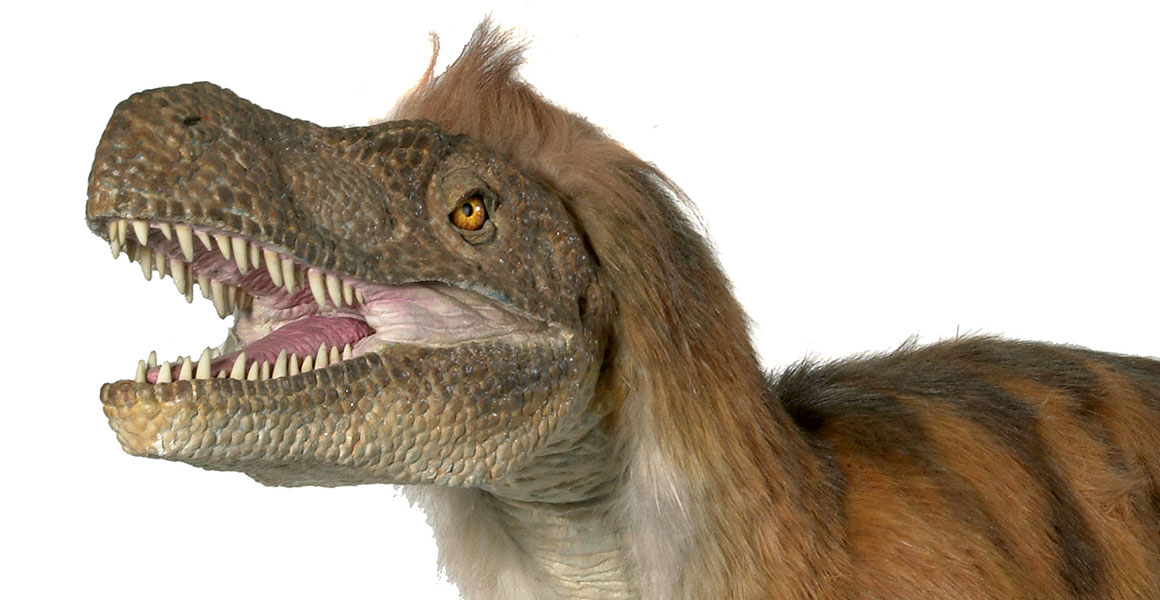
There are currently two known Velociraptor species. The genus Velociraptor was named by scientists in 1924, with the first species found in Mongolia and called Velociraptor mongoliensis. The second species, Velociraptor osmolskae was found in China and only named in 2008.
Since the discovery of the first Velociraptor fossil on 11 August 1923 in the Gobi Desert in Mongolia, we've learnt a lot about this turkey-sized predator. Museum dinosaur researcher Dr David Button tells us more.
Velociraptor claws were not disembowelling tools
The first Velociraptor fossil found by scientists was an impressive claw, unearthed alongside a complete but crushed skull on an American Museum of Natural History (AMNH) expedition to Mongolia.
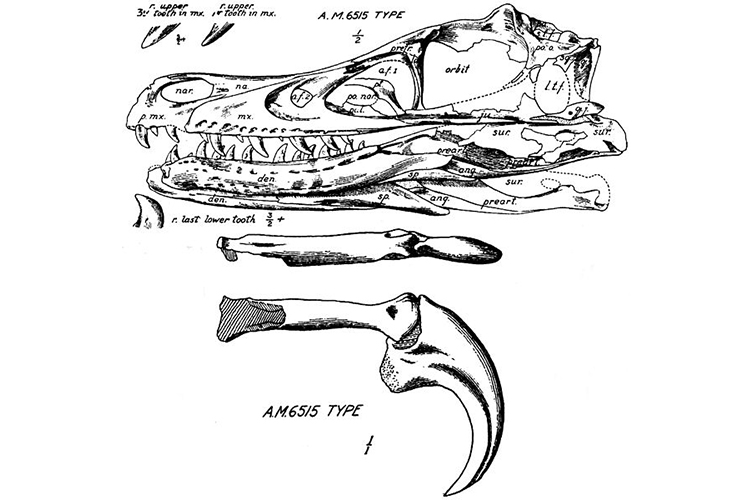
The first Velociraptor fossils - a skull and the fearsome curved claw. These drawings were published by Henry Fairfield Osborn in his 1924 description of the new dinosaur. Image from the AMNH digital library.
Henry Fairfield Osborn, then AMNH president, published a description of the finds in 1924, but he assumed the large, curved claw was from the hand.
We now know it belonged to the second toe of Velociraptor's foot. It was a predator's perfect weapon and could grow to more than 6.5 centimetres around its outer edge.
'People have traditionally thought of the foot claw as a disembowelling tool,' says David, 'but it wouldn't really work like that.
'Palaeontologists built a mechanical model of the claw for BBC documentary The Truth About Killer Dinosaurs and they couldn't get it to disembowel things.'
Instead, research suggests that the razor-sharp claw was used for stabbing, not slashing, and it was probably used as a hook to prevent prey from escaping.
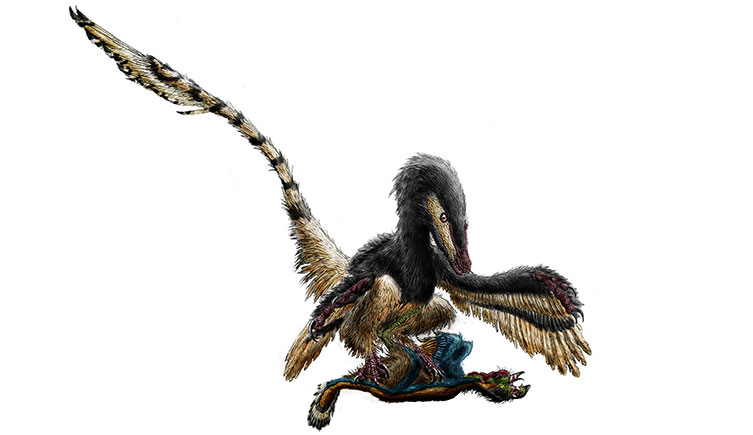
A palaeoart reconstruction of Velociraptor restraining a juvenile oviraptorosaur. Scientists think Velociraptor restrained its prey in a similar way to eagles, using its talons. Image © Durbed via Wikimedia Commons, licensed under CC BY-SA 3.0
David elaborates, 'If you look at the claw it looks just like the talon of an eagle, which is used to grip prey and pin it down. Velociraptor probably used its sickle-shaped talon in the same way to injure, subdue and grip its prey, before dispatching it with its jaws.'
Did Velociraptor tap its claws?
Could the claw have any other purpose? Jurassic Park - which brought Velociraptor into the limelight - included an unsettling scene where the dinosaur tapped its claw on the ground to help it locate prey - in this case, children. But was there any scientific basis for this?
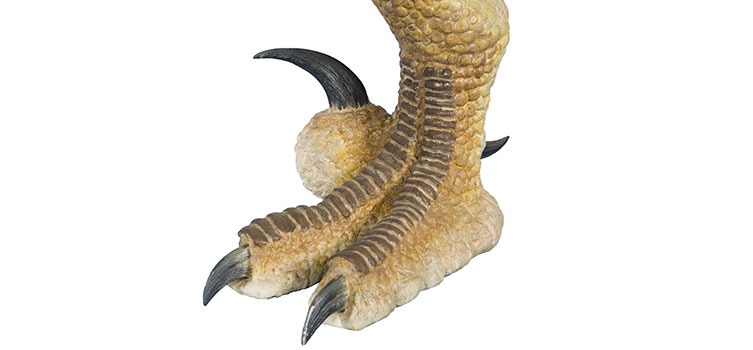
Scientists know that dromaeosaurid dinosaurs like Velociraptor walked with only two toes on the ground. The famous sickle claw was held up in the air, which would have helped keep it sharp.
Just like Tyrannosaurus rex, Velociraptor was a theropod dinosaur. Reptiles in this group typically had three toes on each foot. But unlike T. rex, Velociraptor only walked on two of these toes, keeping the third held up in the air.
'Whenever we find tracks from Velociraptor and its dromaeosaur relatives, there are no little marks made by the sickle-shaped claw. This tells us the dinosaur kept it elevated off the ground, presumably to keep it sharp.
'No evidence of toe-tapping behaviour has been found. I think it was just a cinematic ploy to make them look alert and more scary.'
Did Velociraptor have feathers?
If we were to encounter Velociraptor today, chances are we'd find it disturbing enough, regardless of its size.
David thinks it would seem like an unusual bird of prey - a large one that had been stretched out, but with a very long tail, clawed hands and teeth (not a beak).
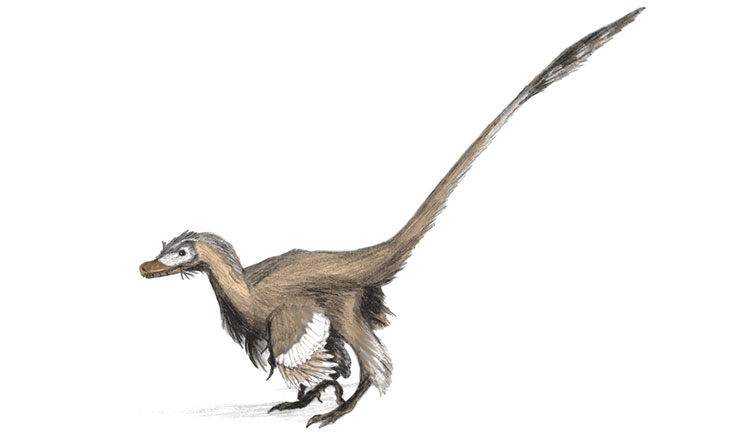
Velociraptor was a bit like an odd-looking bird of prey with a toothy mouth, claws on wing-like arms and a long tail. It was about the size of a Thanksgiving turkey. Image © Matt Martyniuk via Wikimedia Commons, licensed under CC BY-SA 3.0
'It's one of the reasons I think it's a shame they don't put feathers on Velociraptor in the Jurassic Park movies,' he says. 'They'd actually be much creepier because it would be something we recognise but a bit wrong.
'I think it's quite useful to think of Velociraptor like a land eagle as they're very similar to eagles in many ways and it's reasonable to expect they would have behaved similarly as well.
'It wouldn't have been particularly nice to meet - I wouldn't want to meet a grounded eagle, let alone one that's used to being on the ground.'
We know Velociraptor's body was covered in feathers as close relatives, including Microraptor and Zhenyuanlong, have been found with preserved feathers.
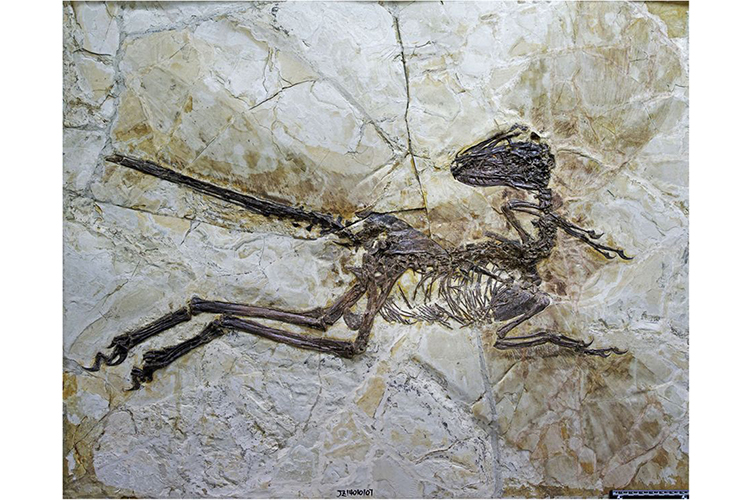
This fossil of Zhenyuanlong, a dromaeosaur named in 2015, includes preserved imprints of feathers
Image © Junchang Lü & Stephen L. Brusatte via Scientific Reports, licensed under CC BY 4.0
In 2007, the discovery of quill knobs on a Velociraptor fossil proved that this dinosaur had long feathers attaching from its second finger and up its arms.
Could Velociraptor fly?
Despite its wing-like arms, Velociraptor wouldn't have been able to fly.
'It didn't have the apparatus needed to get an animal of its size off the ground,' explains David.
'Although it had a wishbone (fused collarbone) like in modern birds, it wasn't the shape needed to support flapping wings.
'The size and shape of Velociraptor's arms meant its wings weren't big enough for it to glide, either. And it had symmetrical feathers, not the asymmetrical ones seen in modern flying birds.'
Given that Velociraptor was flightless, what were the feathers for? Potentially for display - to help attract mates - and to keep it warm.
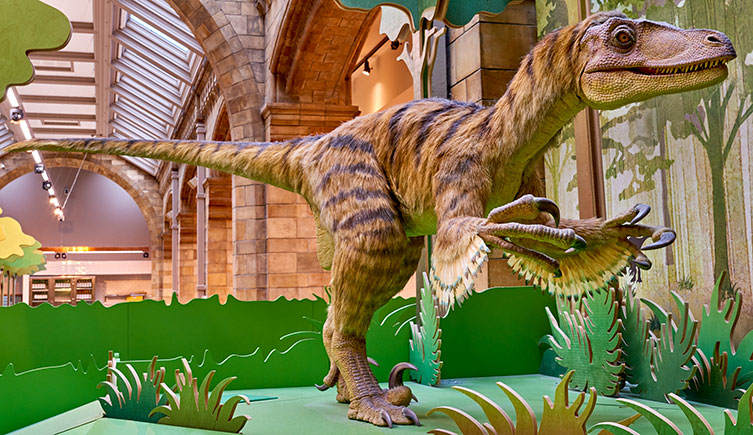
Velociraptor's feathered body would have kept it warm. The longer arm feathers may have been used in mating displays or to cover eggs while brooding. Although this model shows the hands sticking out from feathery arms, comparison with birds suggests the plumes would attach from the second finger.
David says, 'There's quite good evidence for dromaeosaurs having elevated metabolisms. If you're generating a lot of warmth, if you lose it you're wasting loads of energy. Feathers would stop dromaeosaurs losing energy and keep them warm.'
Another suggestion is that Velociraptor used its feathered arms to cover their nests while brooding.
'We have specimens of some oviraptorosaurs, which are relatively closely related to Velociraptor, which are preserved brooding over their eggs like a chicken,' elaborates David.
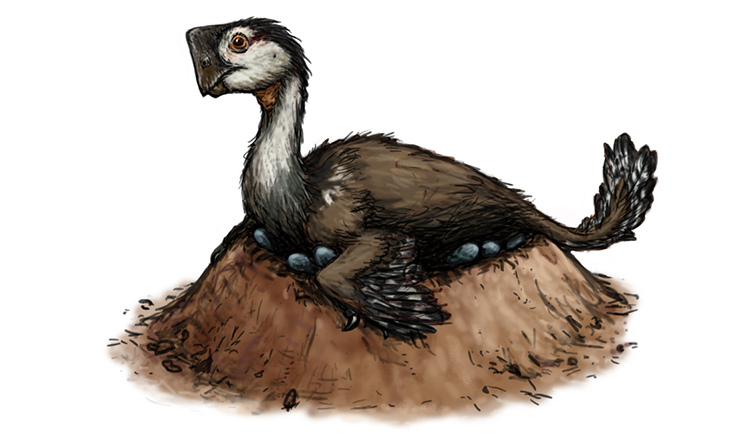
Palaeoart reconstruction of the oviraptorosaur Nemegtomaia nesting, based on a fossil that shows a clutch of eggs with an adult on top in brooding position. Scientists think Velociraptor may have behaved in a similar way. Image © FunkMonk via Wikimedia Commons, licensed under CC BY-SA 3.0
'Velociraptor and its ilk are actually more closely related to birds than Oviraptor and its kind are. So unless this brooding posture arose independently in oviraptorosaurs - which is possible - presumably it evolved in the common ancestor of all these animals, making it likely that Velociraptor would have brooded its eggs in a similar way.'
Unfortunately no fossils proving this have been found. We do have fossils showing other Velociraptor behaviour, however.
Velociraptor fighting Protoceratops
A famous fossil of Velociraptor shows it locked in combat with Protoceratops. These dinosaurs both lived during the Cretaceous Period, some 74-70 million years ago.
David says, 'This is a very interesting specimen because it gives us a snapshot of dinosaur behaviour - something we very rarely have.'
It is the most dramatic evidence that has been found of two dinosaurs fighting.
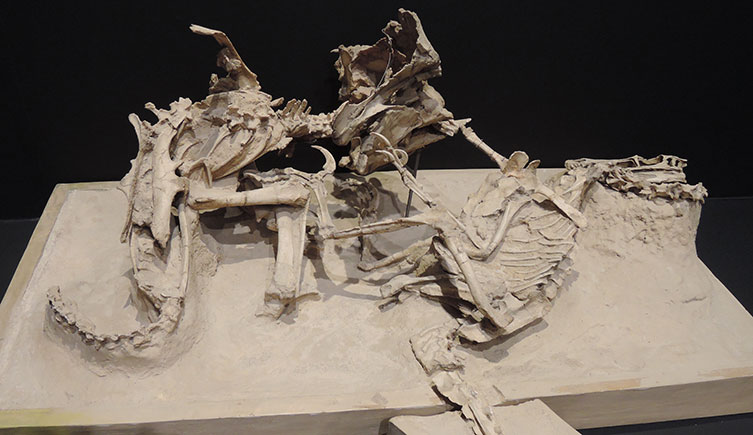
The famous fighting dinosaurs specimen from Mongolia shows Velociraptor and the early ceratopsian Protoceratops engaged in battle. Image © Yuya Tamai via Wikimedia Commons, licensed under CC BY 2.0
The specimen captures the two dinosaurs in the midst of a battle. As David describes, 'The Velociraptor's deadly foot claw is in the Protoceratops's throat, and the Velociraptor's arm is crushed in the Protoceratops's mouth.'
It appears they were preserved in this pose because they were buried by a sandstorm or collapsing sand dune in the middle of their struggle.
While it is a thrilling depiction of a dinosaur battle, David says it's hard to determine why the animals were fighting.
Was the Velociraptor hunting the Protoceratops? If so, it was probably desperate or inexperienced.
David explains, 'It's an oversimplification, but generally if two animals have a fight, the bigger one will win.
'Carnivores tend to only attack something larger if it's sick, injured or old. They don't want to risk injury themselves as it could be fatal - a broken leg, for example, would stop it being able to hunt.'
In this case the two animals were similar lengths, but Protoceratops was much bulkier.
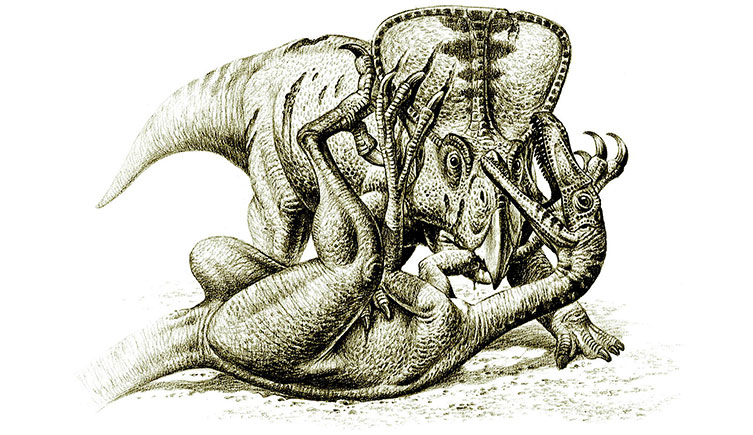
The Velociraptor lacks feathers in this artist's impression, but the drawing effectively illustrates that Protoceratops was a daunting opponent. Image © Chiappe LM (2003) A Field Trip to the Mesozoic via PLoS Biol 1(2): e40
Perhaps it was Protoceratops that provoked the attack, speculates David. Protoceratops might have been quite aggressive, particularly if it saw the other dinosaur as a threat.
He adds, 'All we can say with some certainty is that these two dinosaurs had a fight before they were engulfed in sand.'
Find out more about how dinosaur fossils form.
What did Velociraptor eat?
Because of this famous fossil, Velociraptor is often seen as the perpetual enemy of Protoceratops. But it seems very unlikely that Velociraptor would have habitually preyed upon it, says David.
Velociraptor probably mostly fed on relatively small mammals and reptiles that would have been easy to overpower and kill. That said, it may have occasionally hunted small, infant dinosaurs. In Mongolia, where Velociraptor lived, this could have included young Protoceratops as well as baby Oviraptor and the pachycephalosaur Prenocephale.
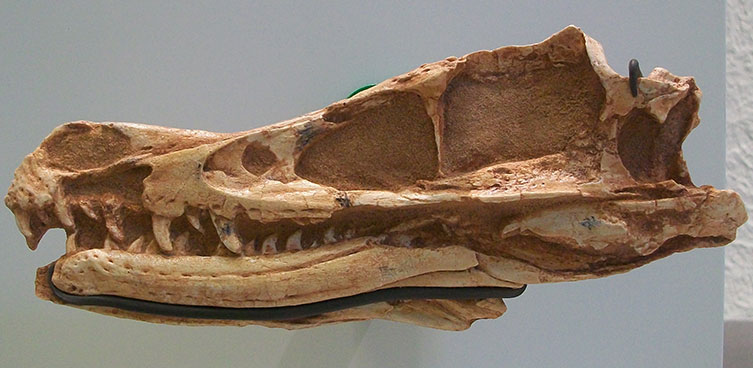
Like lizards and crocodiles alive today, Velociraptor's teeth were replaced throughout its life, ensuring they stayed sharp. Its teeth curved backwards - useful for gripping prey to prevent it from escaping from its mouth. Image © Smokeybjb via Wikimedia Commons, licensed under CC BY-SA 3.0
Velociraptor's narrow jaws and relatively light build support the idea it fed on quite small prey.
Large flying reptile on the menu
Another special fossil has preserved part of a Velociraptor's meal inside its body: a broken bone belonging to a pterosaur.
Scientists estimate that the flying reptile would have had a wingspan around three metres wide - larger than the relatively small Velociraptor that ate it.
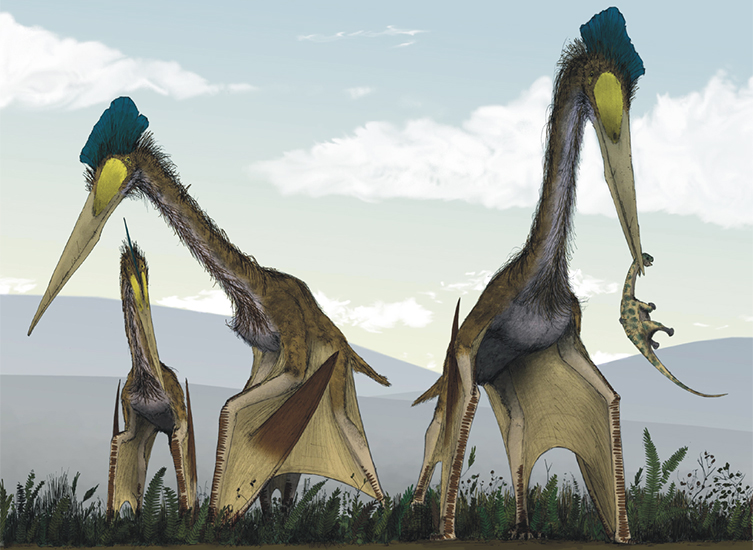
Some pterosaurs were giants and feasted on dinosaurs. The one eaten by Velociraptor was relatively small, but its wingspan was still around 3m across. Image © 2008 Witton, Naish via PLoS ONE, licensed under CC BY 3.0
It would have been a challenging and probably dangerous animal for a young Velociraptor to hunt.
Instead, palaeontologists concluded that Velociraptor was more likely to have scavenged the bone. The fact that the dinosaur ate a large bone also suggests there wasn't much meat left on the carcass.
This may have been relatively unusual behaviour, though.
David explains, 'Pretty much all predators scavenge sometimes, and vice versa. However, Velociraptor lacks the attributes of an animal that relies mostly on scavenging. You'd expect such an animal to be relatively large - able to drive other animals off a kill - and you'd expect it to have very powerful jaws for biting though bone.'
Instead, most of Velociraptor's anatomy seems consistent with it being quite an effective hunter.
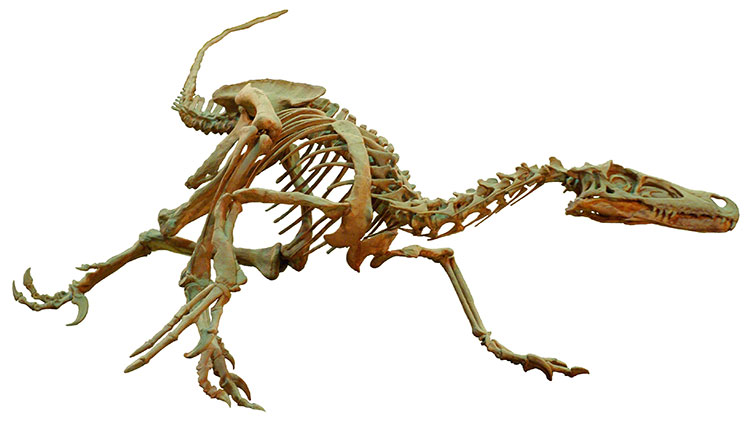
Velociraptor's body was suited to hunting. Image © Ben Townsend via Wikimedia Commons, licensed under CC BY 2.0
David adds, 'Velociraptor's lithe build indicates it was agile, and its clawed hands and feet would have made effective tools for capturing prey. Although slender, its jaws would have been capable of rapid, snapping bites, also allowing it to catch and subdue nimble prey.
'But I doubt it would have turned down the opportunity to feast on a dead animal.'
How fast was Velociraptor?
Did Velociraptor live up to its speedy reputation?
'You can get a rough idea of how suited an animal is to running by the relative length of its thigh and shin, says David. 'A longer shin will increase your stride length, and you'll be faster.'
Velociraptor had quite big legs for its size and they were quite muscular. Its agility was also helped by a long, stiff tail that helped steer at high speeds.
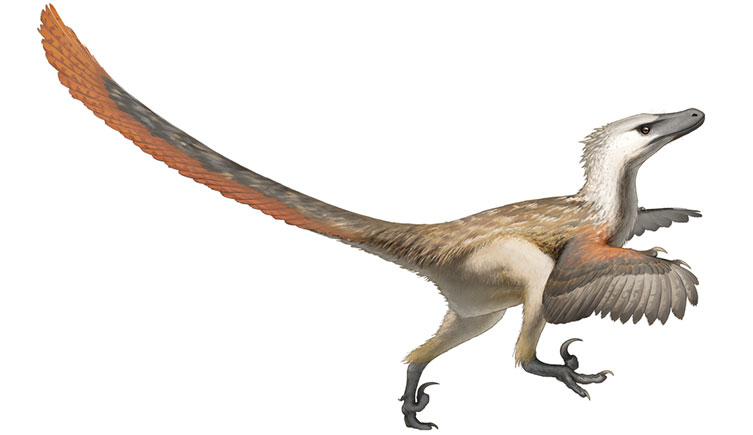
Evidence suggests Velociraptor could run quickly. It had quite big, muscular legs, with relatively long shins and a long, stiff tail that helped it manoeuvre. Image © Fred Wierum via Wikimedia Commons, licensed under CC BY-SA 4.0
'Based on a study that modelled the speed of various dinosaurs, I'd expect Velociraptor to be able to run at over 40 kilometres per hour, at least in short bursts - faster than the fastest human.
'It would have been quite fast by dinosaur standards - rather fortunate given its name means quick or swift - but not the fastest. That accolade goes to the ornithomimosaurs, which had very long shins and are thought to have been able to run as fast as the ostriches they resemble.'
But importantly for Velociraptor it would have been a lot faster than its common prey. Small animals have got quite short stride lengths and if it was snatching young Protoceratops they'd have been nowhere near that speed.
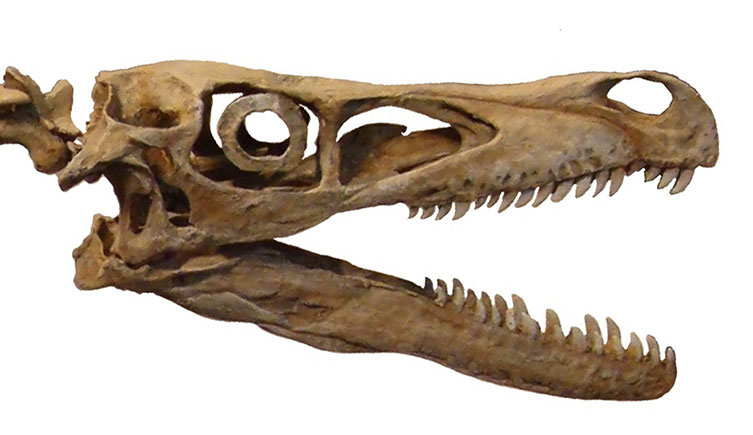
Based on the large sclerotic ring (a bone inside the eye) of Velociraptor, some scientists have suggested that this dinosaur was nocturnal. Image © Eduard Solà Vázquez via Wikimedia Commons, licensed under CC BY 3.0 (skull cropped from fossil skeleton image)
Did Velociraptor hunt in packs?
Despite the common depiction of raptors as cooperative pack hunters, there's very little evidence for such behaviour.
The idea was based on the discovery of the remains of multiple Deinonychus individuals around a single Tenontosaurus, a much larger herbivore. But the predators could just as easily have been scavenging, or all the dinosaurs could have simply been swept up by water and buried together. More recently, multiple Utahraptor have been found with the herbivore Hippodraco, likely after becoming stuck in quicksand.
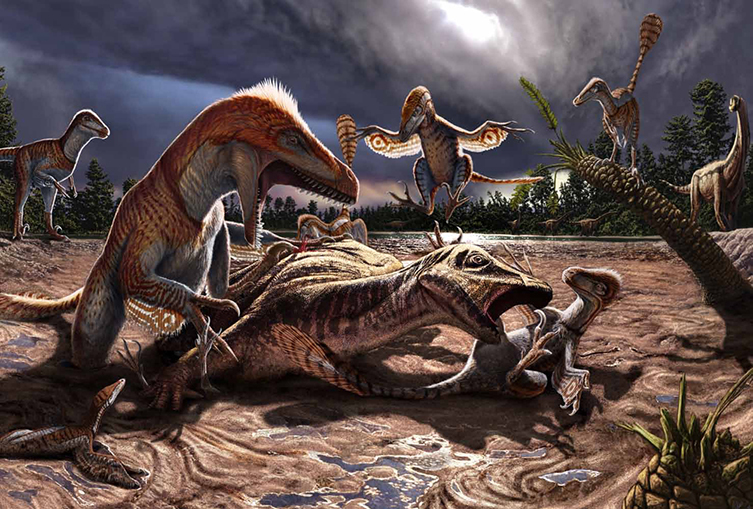
Palaeoartist Julius Csotonyi tells us: 'Inspired by research led by Dr James Kirkland, this image reenacts a moment in the last few hours of life of a pack of Utahraptor and the Hippodraco that lured them to their miry fate in a patch of quicksand.' Image © The Paleoart of Julius Csotonyi published by Titan Books
David says, 'For Velociraptor-sized dinosaurs there are some trackways of multiple individuals moving in the same direction, but this could signify the dinosaurs flocking (moving in a crowd) or following. There's no particular evidence of pack hunting.
'Some modern hawks hunt cooperatively and several modern reptiles, including komodo dragons, hunt in a manner called mobbing - whereby one will attack an animal and then others will opportunistically join in. That's also seen in many birds of prey.
'There isn't currently any evidence for communal hunting of any kind for Velociraptor, although that doesn't mean it didn't happen.'

Well-known dromaeosaurs and their relative sizes. From left to right after the human silhouette: Microraptor, Velociraptor, Austroraptor, Dromaeosaurus, Utahraptor and Deinonychus. The largest known member of the family, Utahraptor, is thought to have been about the size of a polar bear, reaching 5-6m in length. Image © Fred Wierum via Wikimedia Commons, licensed under CC BY-SA 4.0
Was Velociraptor smart?
While Velociraptor was quite smart for a dinosaur, it doesn't quite live up to its Jurassic Park franchise's portrayal as a cunning reptile that could outwit humans.
David explains, 'We can get a rough idea of the intelligence of an animal by the size of its brain relative to its body. We call this measure the encephalisation quotient.
'There's a weird urban myth that Velociraptor has a higher encephalisation quotient than humans. It clearly doesn't.
'However, the size of Velociraptor's brain in proportion to its body is relatively high compared to most reptiles, including most other dinosaurs, so it seems likely it was comparatively clever.
'Velociraptor was not smart like a chimp, or even a parrot or crow. But it was smart like an average bird - a hawk or something like that.'
Discover more dinosaur myths and movie misconceptions.
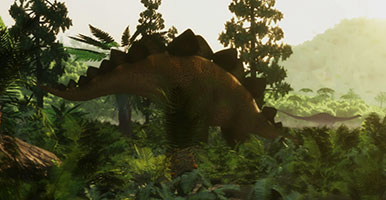
Discover dinosaurs
Find out what Museum scientists are revealing about how dinosaurs looked, lived and behaved.
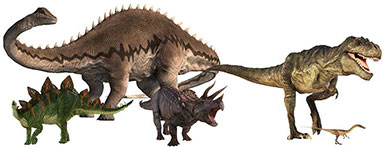
Dino Directory
Explore more than 300 dinosaurs by name, shape or when and where they lived.
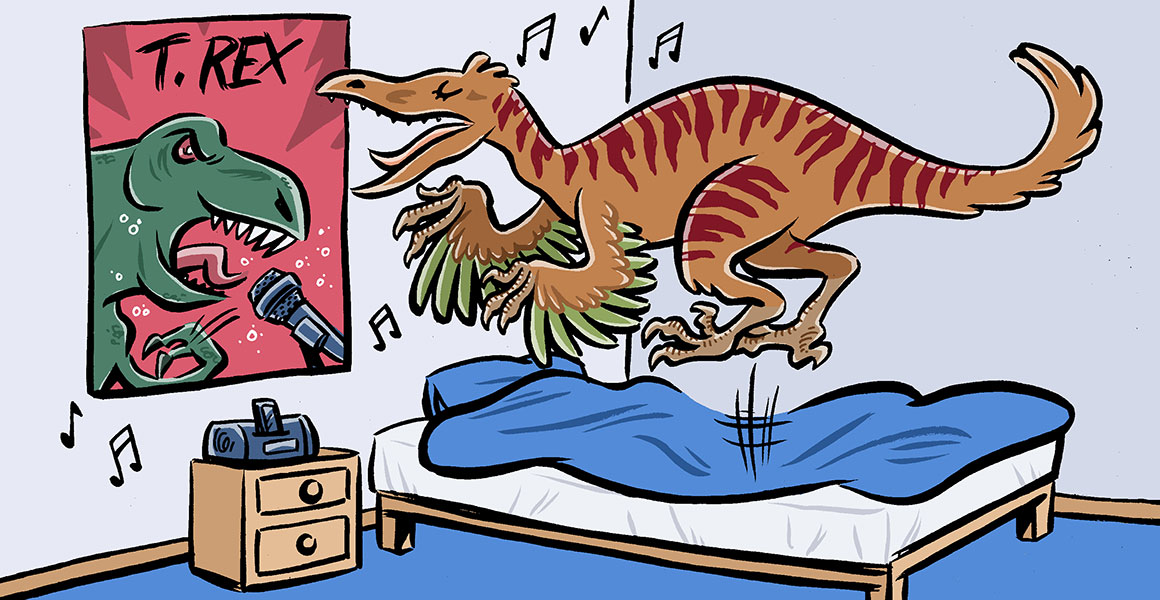
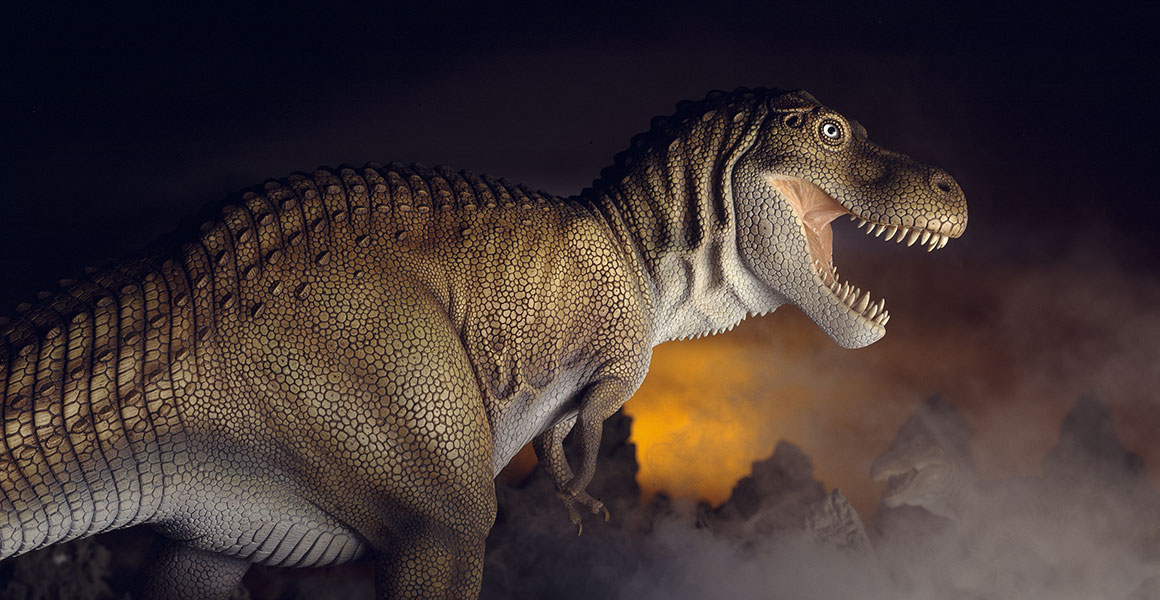


Don't miss a thing
Receive email updates about our news, science, exhibitions, events, products, services and fundraising activities. We may occasionally include third-party content from our corporate partners and other museums. We will not share your personal details with these third parties. You must be over the age of 13. Privacy notice.
Follow us on social media